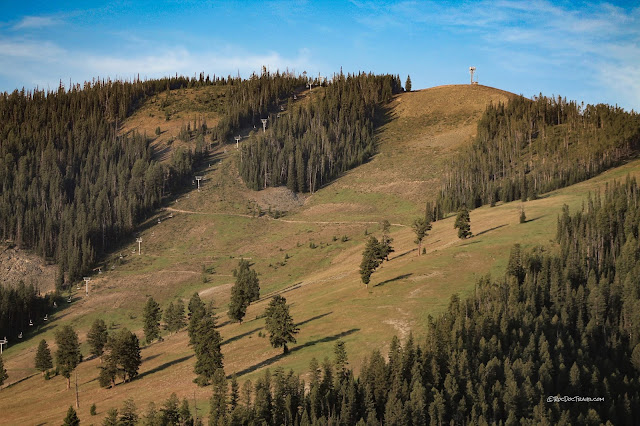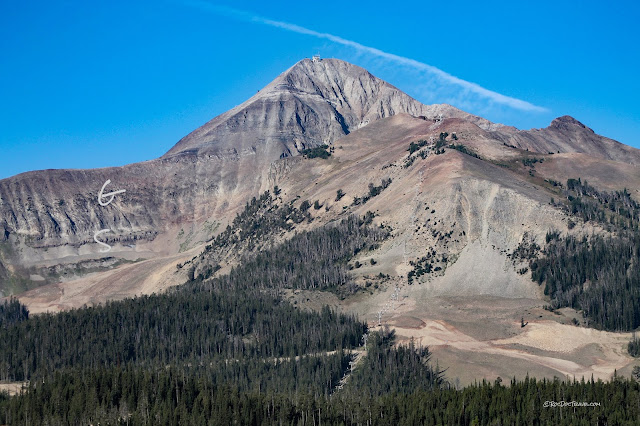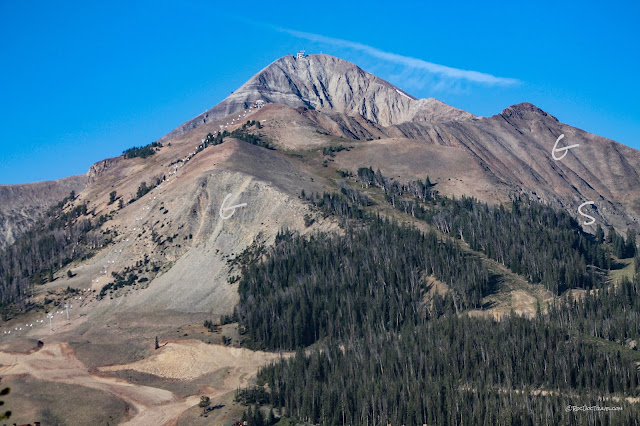Big Sky, Montana
Big Sky, Montana
Discover the unique bedrock that shaped this northern Rockies treasure!Travel to Big Sky, Montana
Big Sky is located in southwestern Montana just north of Yellowstone along U.S. highway 191. The nearest airport is at Bozeman, about an hour's drive away.
Lodging is abundant, but expensive during ski season. More is available in the Bozeman - Belgrade area to the north, but would involve a long canyon drive. Camping is available in Gallatin Canyon -- make summer reservations early.
Geology of Big Sky
Sunrise on Lone Mountain, seen from highway 191. The peak is dacite, which is a slightly darker igneous rock like granite. Its parent magma rose from below about 68 million years ago, spreading between the sedimentary rock layers as sills and dikes. Lone Mountain is the thickest part of the dacite, which explains why it has not been eroded down like the rest of Big Sky.The north side of Big Sky is a dramatic fold (a syncline) that formed along a major fault, the Spanish Peaks fault. The bedrock north of the fault was lifted up by thousands of feet, bringing some of North America's oldest rocks (gneiss, schist, and granite) up against the Paleozoic to Mesozoic sedimentary rocks of Big Sky.
This is a panorama of the fold and Spanish Peaks fold and fault east of Big Sky. Big Sky is off to the left. The cliffs up high are steeply tilted Mississippian limestone.
The bedrock in most of Big Sky is Cretaceous sandstone, siltstone, and shale. It was deposited just east of a major mountain range we refer to as the Sevier mountains. Those mountains have long since eroded away, but the sediments remain. Only the sandstones form cliffs, while the shale and siltstone form gentle slopes, making these hills ideal for ski runs. Lone Mountain and its diorite are in the background.
The diorite is pinkish to brownish, and forms cliffs and steep slopes because it is hard -- it resists erosion. This kind of mushroom-head-shaped intrusion is called a laccolith.
Some of the Cretaceous sedimentary rock layers are visible on the north side of Lone Mountain (the gray and light tan layers in the cliffs). The diorite intruded above and below these layers like creme filling in a pastry.
This is the central resort area of Big Sky. Most of the forest is on gentle slopes on the Cretaceous sedimentary rocks.
A tram serves the 11,167 foot peak. In this view you can see some of the darker sedimentary rock layers.
The Cretaceous sedimentary rocks are part of the "foreland basin" that extends from Alberta to Arizona.


























